The Irish Brigade Monument at Antietam
 In observance of this week’s anniversary of the battle of Antietam, I want to take a close-up look at the Irish Brigade monument that sits at the southern end of the Sunken Road near the observation tower. Its location and its subject matter makes the monument one of the most prominent and popular on the battlefield. It never fails to capture my attention any time I visit.
In observance of this week’s anniversary of the battle of Antietam, I want to take a close-up look at the Irish Brigade monument that sits at the southern end of the Sunken Road near the observation tower. Its location and its subject matter makes the monument one of the most prominent and popular on the battlefield. It never fails to capture my attention any time I visit.
Sculpted by Ron Tunison, the monument was dedicated on October 25, 1997.
According to the inscription on the south edge of the monument:
Formed in November 1861, the Brigade was largely recruited in New York, Massachusetts and Pennsylvania. Its initial regiments were the 69th, 88th and 63rd New York State Volunteers. Other units identified as part of the Brigade included the 29th Massachusetts, 116th Pennsylvania and 25th Massachusetts Volunteer Infantry Regiments. The Brigade fought in all of the major campaigns of the Army of the Potomac. It lost over 4,000 men during the war. This total is larger than the number of soldiers who served in the Brigade at any single time. Eleven Brigade members were awarded the Congressional Medal of Honor. Of the Five Officers who commanded the Brigade, three were killed or mortally wounded. Colonel Richard Byrnes (Cold Harbor), Colonel Patrick Kelly (Petersburg), and Brigadier General Thomas A. Smyth (Farmville). The Brigade was mustered out in June 1865.
I want to invite you to take a close look at sculptor Run Tunison’s work on the bas relief figures that literally burst from the monument’s front. I’m arranging the photos in order from left to right as the figures appear on the monument. Look, in particular, at the facial expressions.
The backside of the monument features a bas-relief portrait of Brigadier General Thomas Francis Meagher
 The Irish Brigade commander was born in Waterford City Ireland on 23 August 1823, a well educated orator, he joined the young Ireland movement to liberate his nation. This led to his exile to a British Penal Colony in Tasmania Australia in 1849. He escaped to the United States in 1853 and became an American citizen. When the Civil War broke out he raised Company K, Irish Zouaves, for the 69th New York State Militia Regiment which fought at First Bull Run under Colonel Michael Corcoran. Subsequently Meagher raised the Irish Brigade and commanded it from 3 February 1862 to 14 May 1863. He later commanded a military district in Tennessee. After the War Meagher became Secretary and Acting Governor of the Montana Territory. He drowned in the Missouri River near Fort Benton on 1 July 1867. His body was never recovered.
The Irish Brigade commander was born in Waterford City Ireland on 23 August 1823, a well educated orator, he joined the young Ireland movement to liberate his nation. This led to his exile to a British Penal Colony in Tasmania Australia in 1849. He escaped to the United States in 1853 and became an American citizen. When the Civil War broke out he raised Company K, Irish Zouaves, for the 69th New York State Militia Regiment which fought at First Bull Run under Colonel Michael Corcoran. Subsequently Meagher raised the Irish Brigade and commanded it from 3 February 1862 to 14 May 1863. He later commanded a military district in Tennessee. After the War Meagher became Secretary and Acting Governor of the Montana Territory. He drowned in the Missouri River near Fort Benton on 1 July 1867. His body was never recovered.
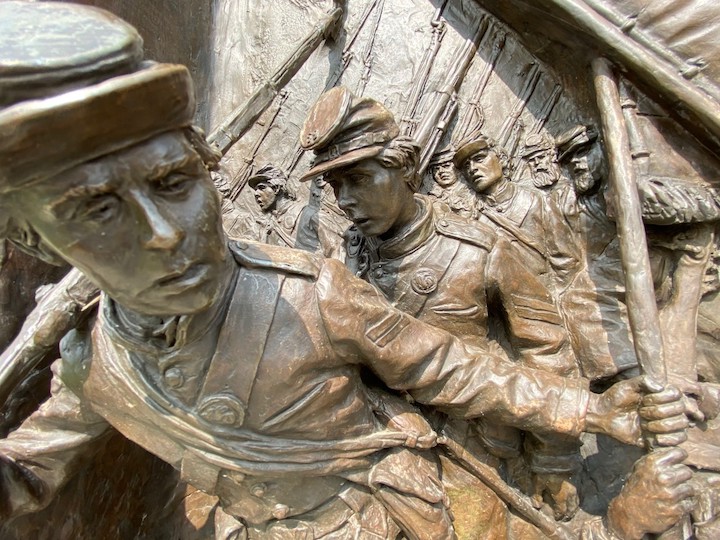
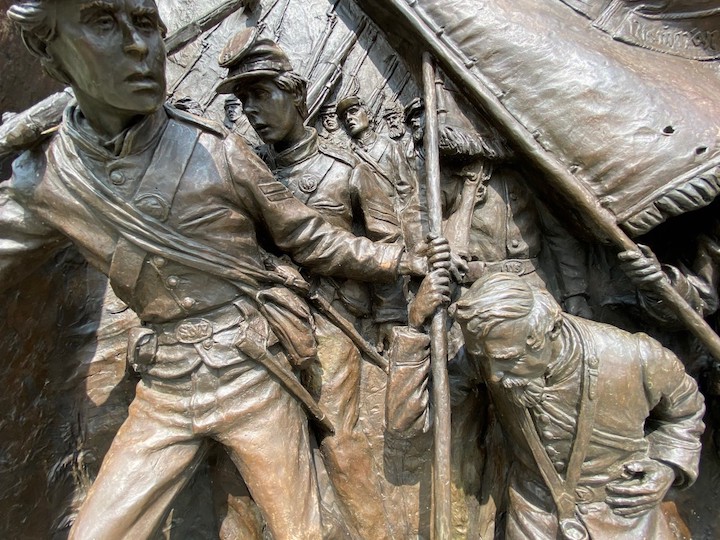
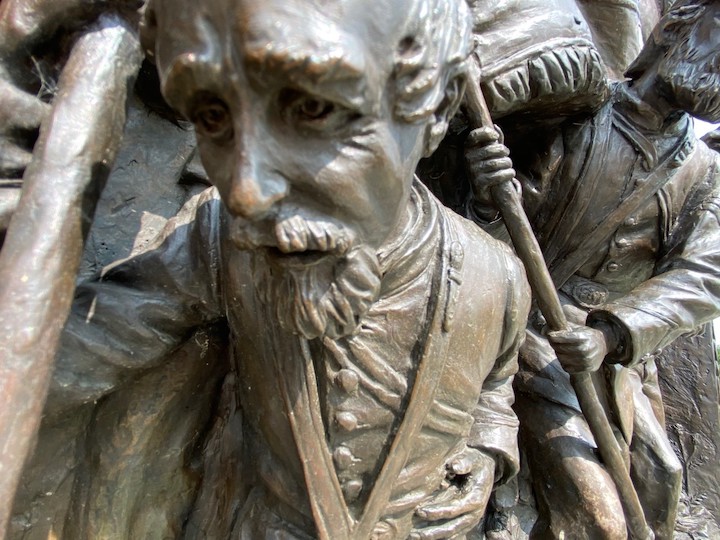
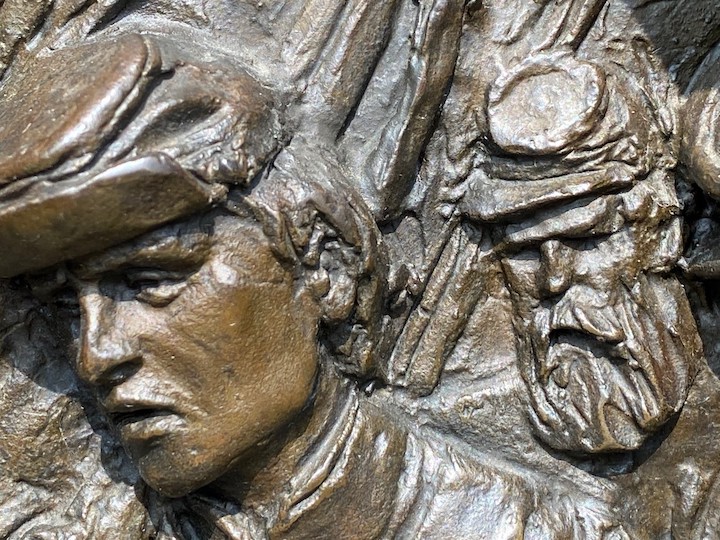

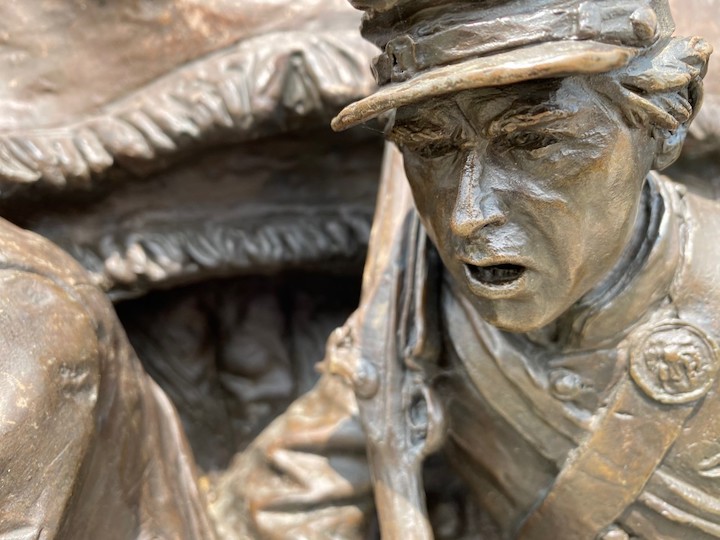
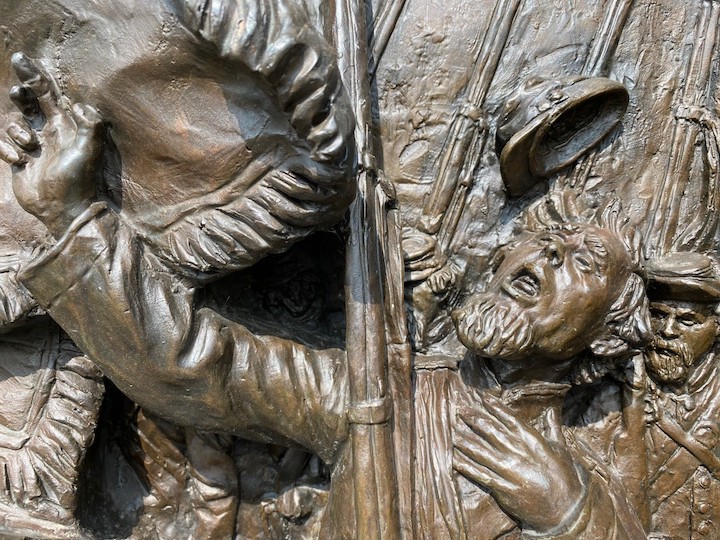
Ron Tunison was a long time member of the Capital District Civil War Round Table. I and a number of the members were privileged to go to his studio in the Catskills. His figures were modeled from life. The young ones were frequently his sons. The women’s monument in the Gettysburg Cemetery of Elizabeth Thorn was his wife. He left us too soon but he left a wonderful legacy in bronze.
No braver men like the Fighting Irish who fought for their freedom in their native Ireland and the country they fled to seek freedom from religious oppression.God Bless Them
Outstanding photographs, Chris. Thank you.
Great brigade, and absolute lions in battle. Not a fan of the statuary’s format. The flags dwarf the men.
Nice photos Chris! Lots of detail to look at.
An amazing symbolic moment occurred when at the beginning of the dedication ceremonies a flock of “wild geese” flew over the battlefield squawking.
There is a magnificent equestrian statue of Meagher in Waterford City, Ireland erected by his friends in America. Whenever I think of the Irish Brigade, I am reminded that someone said the Irish like to fight, and if they can’t find anyone to fight with, they will fight with each other!